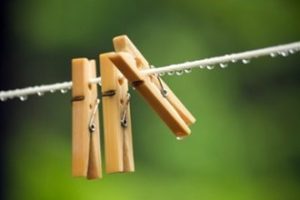 A torsion spring is a type of helical metal spring that stores mechanical energy when twisted. Once it’s twisted, the spring exerts proportional force to the amount being applied but in the opposite direction. When applied, the sideways forces twist the coils tighter, reducing the spring diameter and making its body longer.
A torsion spring is a type of helical metal spring that stores mechanical energy when twisted. Once it’s twisted, the spring exerts proportional force to the amount being applied but in the opposite direction. When applied, the sideways forces twist the coils tighter, reducing the spring diameter and making its body longer.
Basically, any time a rotational or torsional force is needed, a torsion spring can be used. They can be designed in an array of sizes, materials, and thicknesses to suit any application. Miniature torsion springs are used in electronics while larger variations can be used for industrial uses where large loads need to be applied.
Here are five common uses.
Doors
Torsion springs are particularly useful as door hinges. From residential doors, garage doors, and automobile doors to large, industrial heavy-duty overhead doors used at loading docks and warehouses, there’s no doubt that the torsion spring is a vital component in all of the different types of doors. They’re used in high-lift or vertical-lift doors, for those that roll out on a track and those that don’t. They vary greatly in size and lift due to the wide range of door sizes and door weights. These springs are so widely used in door hinges because they allow the door to return to its original position at all times. Just think about those saloon doors that swing back and forth but always return to their position in the middle.
Clothes Pins
Clothes pins have been around for ages. You probably have some hidden in your basement or in your backyard somewhere, and you remember your parents and grandparents using them. They’re relatively simple in design, and you’ve probably never really considered how they work. But you’ve probably guessed by now that they open and shut thanks to tiny torsion springs. Not only is a clothes pin held together by a small torsion spring, but the spring is what also provides it with its clamping ability.
Vehicle Suspension
Of course, you know that the purpose of your vehicle’s suspension is to absorb the shocks of the roads while your car goes over rough terrains and bumps. It cushions your ride so you can stay comfortable. Some vehicles use a torsion bar spring as their main weight-bearing spring. One end of this type of torsion spring is attached to the body of a vehicle while a lever arm is attached to the wheel axle at the other end. Several models of cars and trucks, as well as military vehicles, use this type of suspension.
Clocks
Some clocks, known as torsion pendulum clocks, use a wheel-shaped weight that is suspended from its center by a torsion spring. While the weight rotates around the axis, it twists the spring. Driven at the top of the gears, the wheel oscillates back and forth by the force of the spring reversing the direction of the rotation.
Watches
Mechanical watches require very fine, spiral torsion springs. The spring pushes the balance wheel back to its center position while it rotates back and forth. It’s considered a balance spring and works in a way that is similar to the torsion pendulum used to keep time in clocks.
Just the Beginning
These are just five of the most common applications for torsion springs. In reality, there is an endless list of other applications that use this type of spring in order to function correctly, like clipboards, mousetraps, levels, switches, and myriad other products. Suffice it to say, if it weren’t for the versatile torsion spring, many common applications that we use every day would be useless.
Belt Tensioner Spring
Learn How We Helped an Automative Parts Manufacturer
Reduce Spring Cost by 20%
